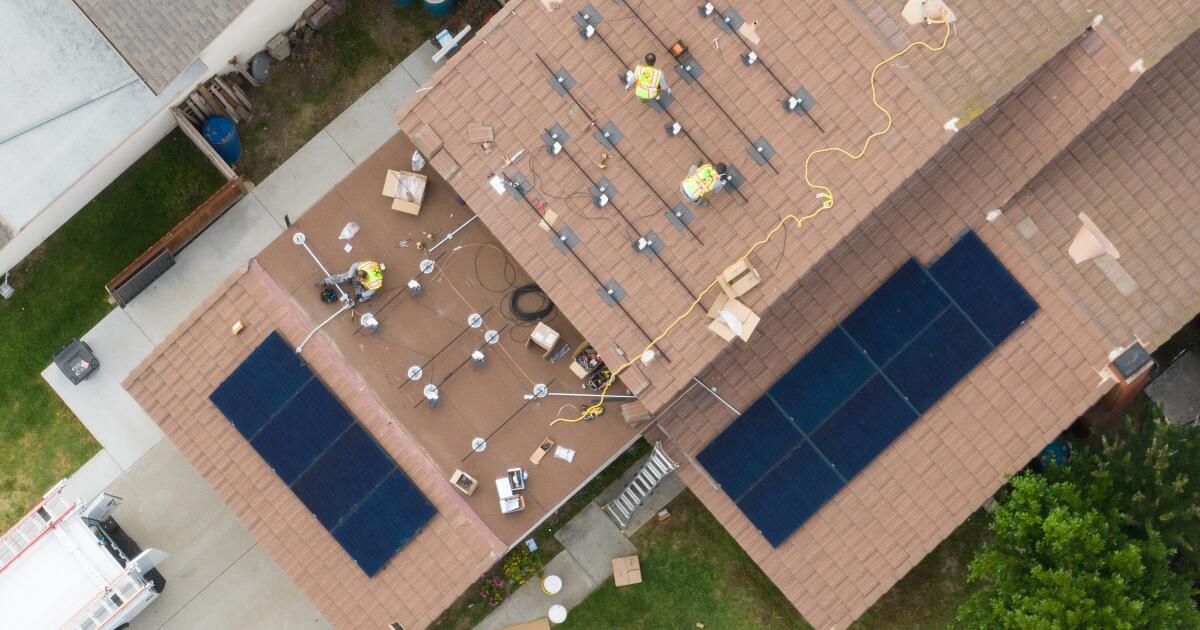- cross-posted to:
- climate@slrpnk.net
- cross-posted to:
- climate@slrpnk.net
But critics insist the costs of those solar panels are beginning to outweigh the benefits.
Incentive payments to homes with solar, they say, have led to higher electricity rates for everyone else — including families that can’t afford rooftop panels. If so, that’s not only unfair, it’s damaging to the state’s climate progress. Higher electricity rates make it less likely that people will drive electric cars and install electric heat pumps in their homes — crucial climate solutions.
The solar industry disputes the argument that solar incentive payments are driving up rates, as do many environmental activists. But Newsom’s appointees to the Public Utilities Commission are convinced, as they made clear Thursday.
“We need to reach our [climate] goals as fast as we can,” said Alice Reynolds, the commission’s president. “But we also need to be extremely thoughtful about how we reach our climate change goals in the most cost-effective manner.”
When I am having a stroke, I don’t stop and calculate of the most cost effective treatment options. I go to the emergency room. We could have done this calculation in 1970 and acted, but that ship has sailed.


Decentralized power generation can be good for redundancy/resilency/off-the-grid purposes, but if you want the highest efficiency, you need large scale, centrally engineered not-for-profit projects.
You only need high efficiency if your energy source costs money.
When your energy source falls out of the sky every damn day, efficiency is irrelevant.
Yes as we all know it is free to build solar panels. It is free to write the software to control the solar panel. It is free to wire the solar panels to the grid and solar panels and all supporting hardware last forever.
And since all of this is 100% free, there is also absolutely no difference in the energy collected or the amount of materials used between 10,000 contractors slapping down some solar panels in dubious configurations as quickly as possible so they can get their subsidized installation fees, versus a centralized public project designed to minimize transmission losses, material waste, and maximize longevity and light energy collection.
Yes, yes, those are all very good points.
Another very good point is “taxes”.
A centralized project necessarily involves regular (monthly) transactions between a seller and a buyer. That involves metering expenses. Accounting. Billing. Collections when some of your customers don’t pay their bills. Losses, when collections don’t work. A legal department. The liability associated with having deep pockets in a litigious society. Inflation: your costs are going to be rising on a regular basis to keep up with it. Managers and supervisors. An HR department. A CEO, board of directors. Shareholders.
And, of course, every kWh you sell is taxed by the government, every bill, every month. That just isn’t true of a personally-owned solar panel.
You have a wide variety of continuing operational expenses associated with all those transactions you have to conduct between your centralized project and the customer. Those made sense with fossil fuel generation: a small, household generator has a high fuel bill. A central facility can buy fuel cheaper, and their larger engines are more economical. That margin leaves a lot of room to fund the additional overhead needed to sell power to the consumer.
But, if he has free fuel available (virtually nil operating costs) at home, all those efficiency gains are irrelevant: he can still be cheaper while being less efficient.
Save the centralized projects for things that rooftop solar can’t do: distribution, storage, etc.
the cost argument is silly